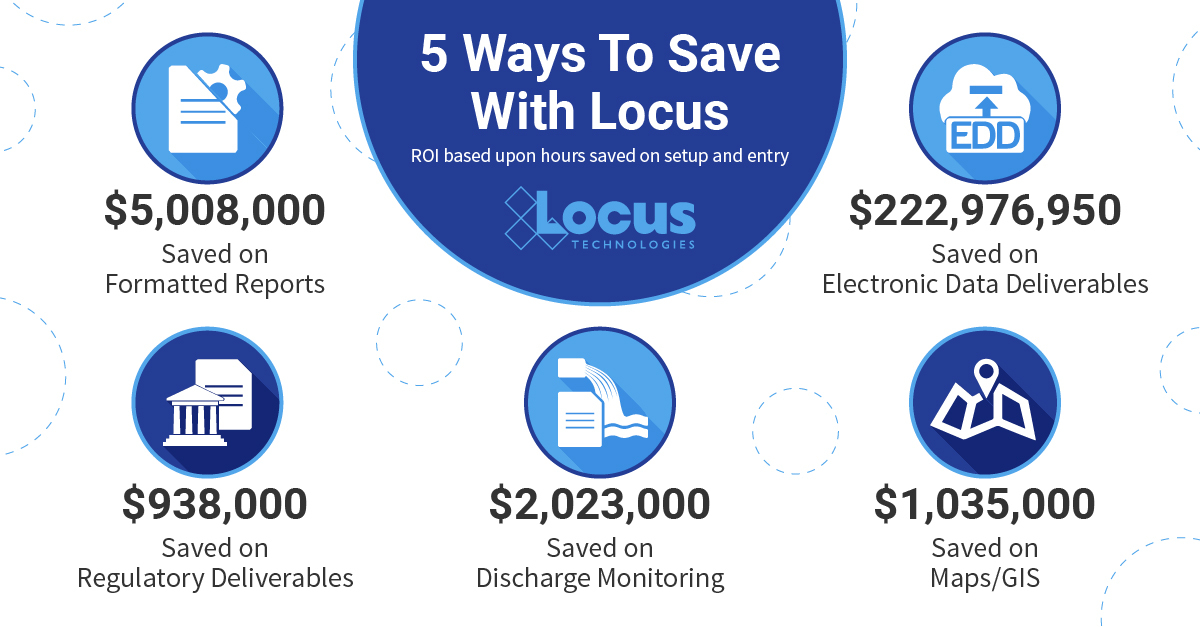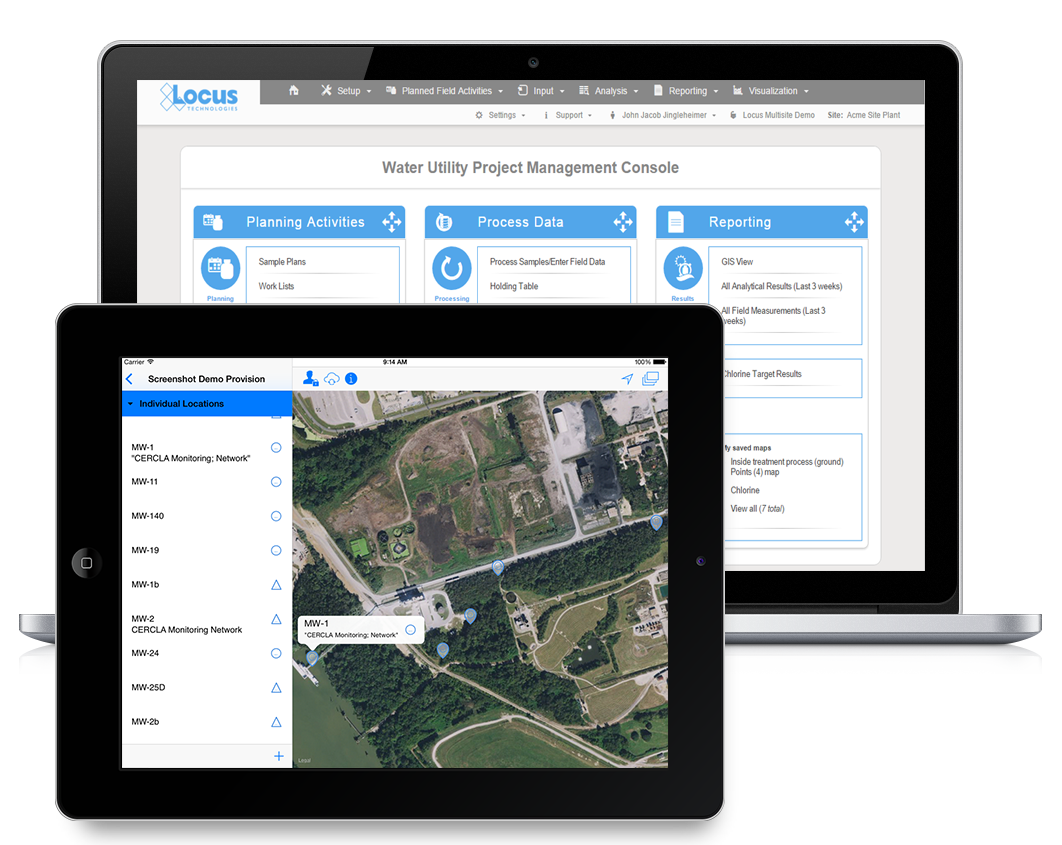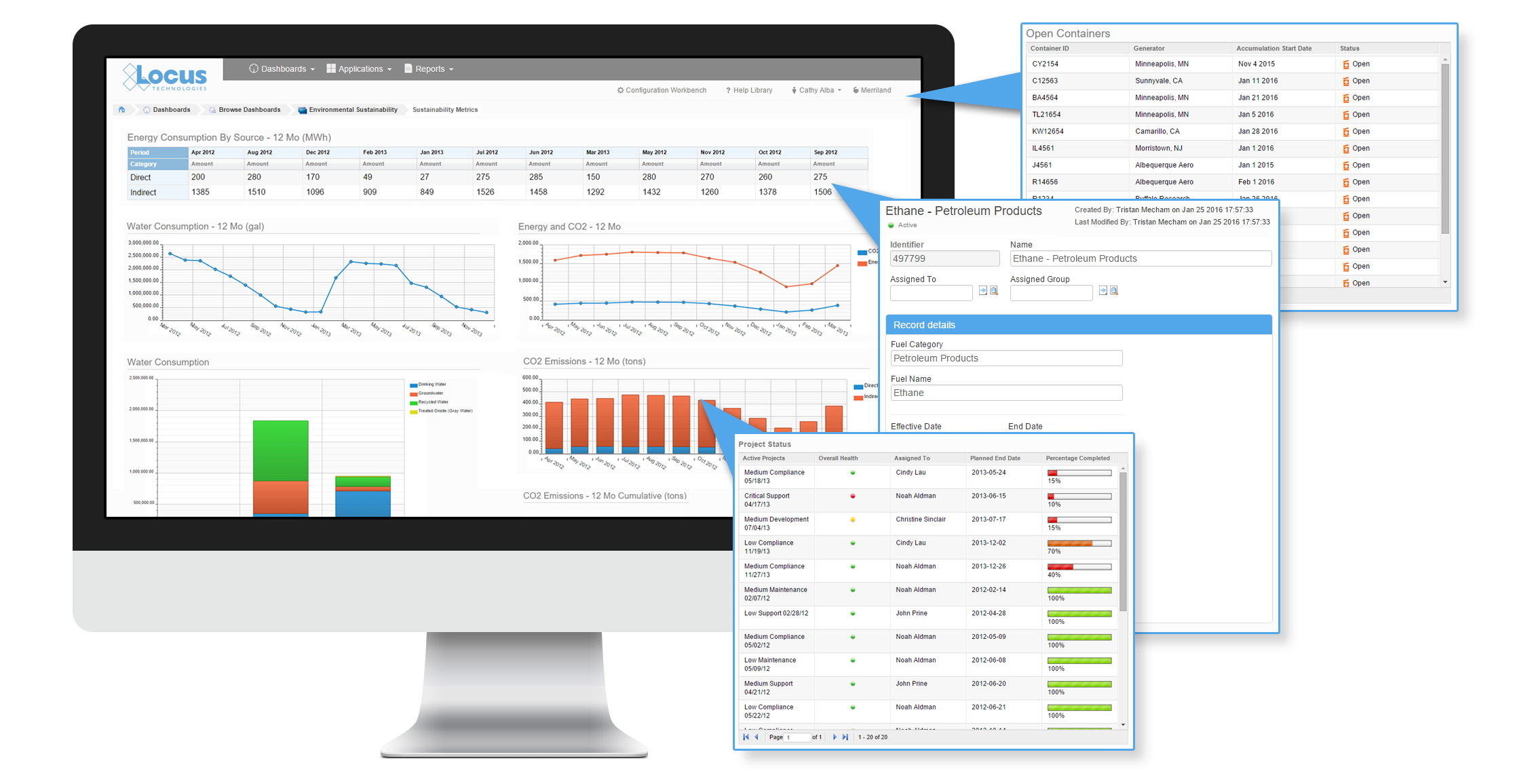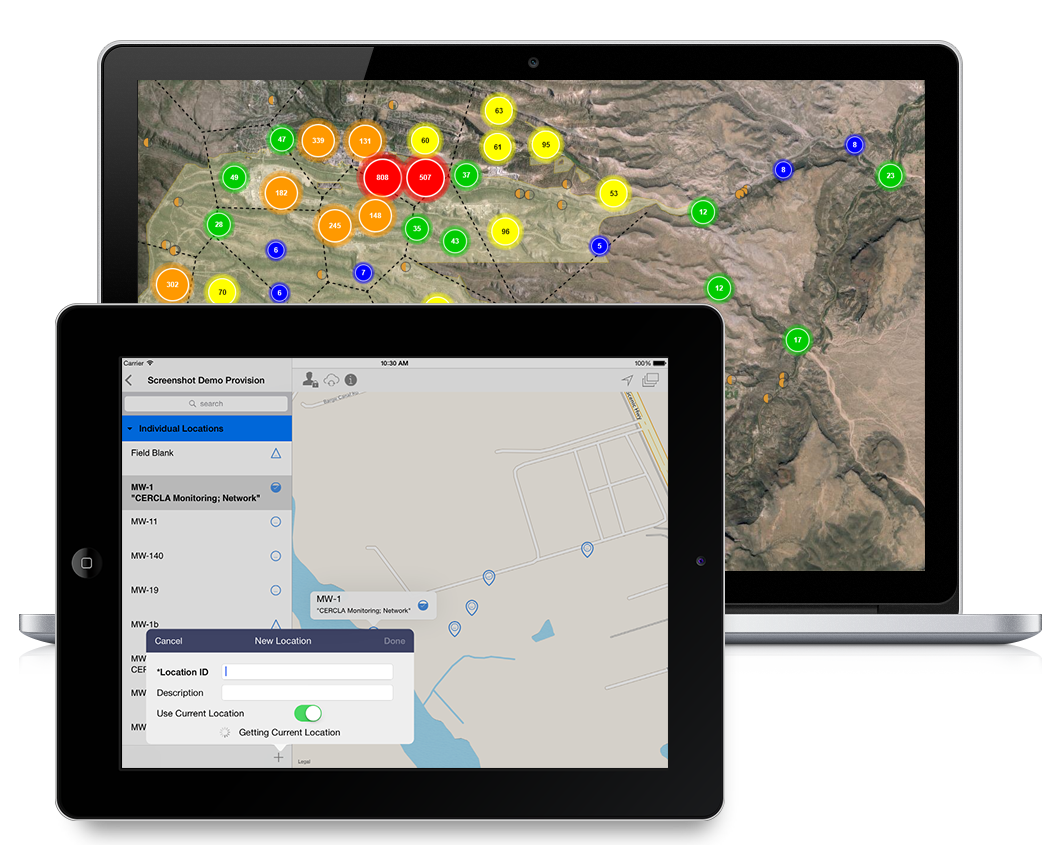Top 10 Enhancements to Locus Environmental Software in 2020
Let’s look back on the most exciting new features and changes made in EIM, Locus’ environmental data management software, during 2020!
Let’s look back on the most exciting new features and changes made in EIM, Locus’ environmental data management software, during 2020!
Let’s take a look back on the most exciting new features and changes made in Locus Platform during 2020!
For over 20 years, Locus environmental software customers have saved enormously on their setup and and data entry costs. This infographic highlights the aggregate savings of all users based on conservative estimates of time and cost for different aspects related to our software.

Today is GIS Day, a day started in 1999 to showcase the many uses of geographical information systems (GIS). Earlier Locus blog posts have shown how GIS supports cutting-edge visualization of objects in space and over time. This post is going to go “back to basics” and discuss what makes GIS unique and how environmental data analysis benefits from that uniqueness.
So, what makes GIS unique? It’s the ability of GIS to handle spatial relationships, which goes beyond just putting “dots on a map”. You are probably familiar with non-spatial relationships such as greater than, less than, or equal to, and you probably use them every day. For example, suppose you want to buy the latest gaming console (PS5, anyone?). You need to compare the price of the console to your bank account. If the console price is greater than your savings, then you cannot buy the console.
Or can you? With credit cards, you can pay later, so you go charge the console. At the time of the transaction, some software evaluates a non-spatial relationship and checks if the console price plus your current debt is less than your credit limit. If so, you can buy the console; if not, your purchase is denied.
The key point about this example is that spatial relations play no part. It doesn’t matter where you are located or where the game console is sold from. (OK, there may be things like state taxes and shipping, but that just contributes to the price.) Now, if you were trying to find all gaming consoles for sale within a certain distance of you, that is a spatial relationship. There are multiple types of spatial relationship, but the most common are inside, contains, crosses, overlaps, and within a distance of. Standard relational database software does not handle these sorts of relations, but GIS can.
As an illustration, let’s consider two current events: the 2020 US presidential election and the COVID-19 pandemic. With non-spatial relationships, you can answer various questions such as “did Biden get more votes than Clinton?” or “is the number of positive COVID tests increasing?”. But with spatial relations, you can answer more interesting questions such as “did areas with COVID hot spots vote more predominantly for Biden or Trump?”. For this question you must see if voters lie inside a COVID hot spot; a GIS can perform this analysis and then map the results. While many votes are still being counted, as of this blog post, it appears Trump performed better in COVID hot spots.
Let’s look at some example of spatial relations in environmental data. Assume you have a database of tritium sampling results in water, along with various map layers of natural and manmade features. What kind of spatial relationships can you explore with GIS?
To answer that, we’ll make some maps with the Locus GIS+ package in EIM, Locus’s cloud-based, software-as-a-service application for environmental data management. All maps shown here display wells with tritium samples, with the wells represented as colored circles. The color scale goes from blue through yellow to red, to indicate increasing tritium results.
Figure 1 shows an example of an inside spatial relationship. The map answers the question “what wells with tritium results are inside the Mortandad Canyon watershed?”. The watershed is highlighted in blue on the map, and you can easily see the wells inside the watershed.
Figure 2 shows wells with tritium results that are within a distance of a river. The map answers the question “what wells with tritium results are within 500 ft of the river?”. The river, highlighted in light blue, has a 500 ft buffer shown as a dotted blue line. The wells with tritium that lie within the buffer are shown on the map, so you can check if any high tritium results are close to the waterway.
Figure 3 shows another example of within a distance of. Here, the map answers the question “what wells with tritium results are within two miles of a middle school?”. The two-mile radius is shown as a shaded blue circle centered on the school. You can see the wells are confined to the area southeast of the school.
These three examples are just a small subset of what can be done with GIS and environmental data. Here are some other questions illustrating the kind of spatial analysis that GIS supports.
All these examples illustrate the power of GIS for analyzing spatial relationships, and these examples are just the beginning. GIS can also perform more sophisticated analyses that look at spatial relationships in different ways to answer questions such as:
Locus continues to bring new analysis tools to our Locus GIS+ system for environmental applications. These applications let you take advantage of the unique ability of GIS to analyze spatial relationships in your environmental data.
Acknowledgments: All the data in EIM used in the examples was obtained from the publicly available chemical datasets online at Intellus New Mexico.
Locus GIS+ features all of the functionality you love in EIM’s classic Google Maps GIS for environmental management—integrated with the powerful cartography, interoperability, & smart-mapping features of Esri’s ArcGIS platform!
Learn more about Locus’ GIS solutions.
About the Author—Dr. Todd Pierce, Locus Technologies
Dr. Pierce manages a team of programmers tasked with development and implementation of Locus’ EIM application, which lets users manage their environmental data in the cloud using Software-as-a-Service technology. Dr. Pierce is also directly responsible for research and development of Locus’ GIS (geographic information systems) and visualization tools for mapping analytical and subsurface data. Dr. Pierce earned his GIS Professional (GISP) certification in 2010.
Becoming water positive is a more difficult task than becoming carbon positive. Both in practice and in tracking complex water data. Less than a decade ago, experts questioned if it was even feasible to have a net-positive impact when it comes to water. Perhaps the biggest reason for the difficulty with water is a relative volatility when compared with carbon. Seasonal environmental changes in rainfall, as well as droughts and floods, effectively make water consumption a non-zero-sum game. And with water, quality is more important than volume. Today, companies and organizations are believing that goal a more attainable one.

Organizations are now shooting for a goal that will create a net-positive impact on volume and quality. Recently, Microsoft announced their goal of becoming water positive by 2030. Their goal is not only impressive, but it is complex and multi-faceted. They plan to achieve more freshwater collection, lower consumption, working with various agencies and NGOs on regulatory changes, and perhaps most importantly digitizing their water data.
Why is this goal so important? Almost a third of the world’s population, over 2.2 billion individuals, lack access to safe and clean water. With potential chronic shortages becoming more common and increased demand being more likely, the need for fresh water will be more drastic as time goes on. Organizations aiming for water positivity will lessen the momentum of water becoming less available.

Where does Locus come in? We can’t solve a problem that we can’t understand. With Locus software, companies and organizations can accurately track and report complex ground and surface water data. Our calculation engine can deliver real-time estimates of supply and demand and our water quality software can manage sample planning and configure notifications for late or missing samples or exceedances in pre-defined limits. Our water quality solutions, long used by utilities like San Jose Water Company and Santa Clara Valley Water, can also help businesses achieve a greater perspective on their water consumption, providing the tools to allow them to become water positive.
MOUNTAIN VIEW, California, 29 October, 2020 — Locus Technologies (Locus), pioneers in environmental software, today announced that HydroGeoLogic, Inc. (HGL), industry leading environmental engineering service provider headquartered in Reston, VA, has chosen Locus’ environmental information management software, Locus EIM, for their field data collection, monitoring, and reporting.
HGL has selected Locus’ cloud-based software after extensive proof of concept and usability testing. They will seek to utilize Locus EIM for environmental monitoring, while also taking advantage of Locus Mobile for field data collection and LocusDocs for document management.
“Our aim has always been to use cutting-edge technology to provide comprehensive environmental engineering services. With Locus, we have just that. Locus provides a secure and innovative solution that allows us to meet our environmental goals.” said Peter Huyakorn, Ph.D, Founder of HGL.
“We are elated that HGL has chosen Locus for their environmental needs. HGL has an amazing track record as one of the premier environmental firms worldwide, and we will work our hardest to provide them with the tools to maintain their superb reputation,” said Wes Hawthorne, President of Locus.
The global economy is currently being tested on a magnitude that we have never witnessed before. The effects of COVID-19 have pushed the limits of individuals, and the organizations that they run. As we collectively face short-term problems related to the pandemic, long-term effects of climate change have, in some ways, been magnified. When the dust settles, and we tackle COVID-19, we will still be facing the consequences of climate change. It is now, however, not after COVID-19 is controlled, that organizations must make steps towards tackling environmental issues. On a positive note, there is a return on investment in sustainability, and there are pragmatic ways of achieving sustainable goals.

The connection between saving money and resources and investing in sustainability is well known. Year after year, sustainable projects result in billions of dollars in savings for the companies investing in them. By 2030, return on investment in sustainability will be $26 trillion. And while those companies investing in sustainability have better numbers, they’re continuing to push for higher sustainability goals, as are government agencies. Companies not making these investments are not only missing out financially, but they are falling behind when it comes to long-term preparedness. Without a doubt, the organizations who are acting first have the leg up. When it comes to sustainability, two proverbs attributed to Benjamin Franklin are as true as when he first said them. “An ounce of prevention is worth a pound of cure”, and “a penny saved is a penny earned.” Pair those variables with the ever-growing awareness and importance of sustainability by the green investor and the green consumer and you have a powerful combination.
Nearly 80,000 emission-reducing projects by 190 Fortune 500 companies reporting data showed nearly $3.7 billion in savings in 2016 alone. – WWF | worldwildlife.org
With climate-related issues comprising the top five long-term risks in terms of likelihood, the need for investing in sustainability becomes all the more apparent. This sentiment is mirrored in a recent Bloomberg article, where Bill Gates suggests that the most difficult long-term problem facing the world today is climate change, and the effect it has on the environment. While outlining several difficulties, he points to one shining light in the fight to sustain a healthy climate: the acceleration and innovation of technology over the past two decades created to tackle the problem. Not many understand more than Locus the fight to maintain, and reduce, and use resources wisely. Locus has, for over two decades, provided advanced tools to improve sustainability on a grand scale.

Several organizations have taken advantage of the sustainability software solutions Locus provides. One example is Del Monte Foods, one of the largest producers of food in the world. They partnered with Locus for sustainability data management, eliminating errors in old data and better monitoring resource usage and cost. They also use Locus’ sustainability app to visualize and report data on the fly. They are tackling sustainability from a practical standpoint, addressing real data, not a nebulous idea. And they have been better off for acting early instead of waiting.

In the end, we must address the problems that face us. We need to tackle COVID-19 and how it affects our organizations, but be mindful that every quarter and every year that sustainability goals are pushed back, there are dollars being lost seeking out attainable improvements to our environment. Not only that, but every step that isn’t taken towards sustainable goals is a step behind other organizations making practical investments in their future and the wellbeing of everyone.
Locus was founded on the vision of online environmental data management for large volumes of complex data collected as part of environmental site investigations. Locus’ Environmental Information Management (EIM) has remained the market leader in cloud environmental data management systems for over 20 years. EIM continues to evolve to meet an ever-wider customer base from international chemical companies to local water districts. Locus has approached EIM’s evolution with the same focus since day 1, handle any type of environmental data with ease and sophistication, enabling our customers to spend less time handling data and more time assessing information.
Since Google Maps was first announced, Locus worked to add GIS elements to our software as soon as it was technically feasible. Our easy-to-use visualization tools have evolved over the years from Scalable Vector Graphics, to Google, to Esri ArcGIS Online. Born with our EIM software, GIS visualization of information was something our customers wanted and loved. Always included in our pricing, having the ability to easily make maps from complex data was always a key feature of EIM. With technical advances, our maps are even more robust and integral to our vision of environmental information management.

In 2000, Locus launched the first environmental data management mobile solution connected to SaaS. 20 years later, Locus Mobile is your single solution for collecting field data, completing EHS audits, tracking waste containers, and much more. Easily configure business-specific data collection needs, enter data offline and synchronize data back to the cloud for final review.
Locus has evolved and innovated SaaS solutions to meet the needs of our EHS and Water Quality customers for over 20 years. As technology and regulatory requirements change, rest assured Locus is working hard so that your organization can be ahead of the curve.
Ahead of its time in 2002, Locus Platform (formerly ePortal) has seen a huge change over time from a simple portal at the beginning of the SaaS movement, to a fully configurable multi-tenant platform. Locus Platform (LP) houses any number of off-the-shelf and custom applications to meet EHS customer needs.
Is your organization still using multiple software systems for EHS&S when you can (and should) be using one robust and unified platform? Unify your compliance, sustainability, water, air, and environmental data with Locus’ cloud platform for EHS&S. It’s easier, cheaper, and more efficient.
With Locus Platform, you can easily and securely feed all of your different EHS data sources to the cloud via a wide array of import options. You will then be able to analyze and report to virtually any regulatory agency, meeting any specific requirements they may have. We believe in making EHS compliance simpler.
Locus Technologies » Applications » Page 30
299 Fairchild Drive
Mountain View, CA 94043
P: +1 (650) 960-1640
F: +1 (415) 360-5889
Locus Technologies provides cloud-based environmental software and mobile solutions for EHS, sustainability management, GHG reporting, water quality management, risk management, and analytical, geologic, and ecologic environmental data management.
